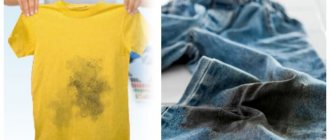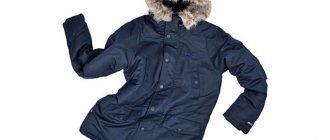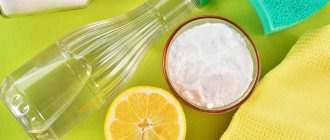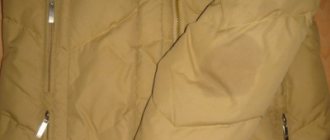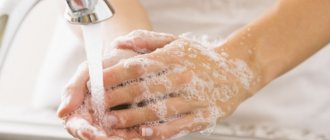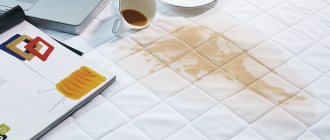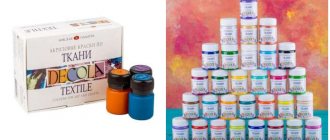Antistatic for clothing is designed to eliminate static electricity, which is formed due to dry air or contact of fabric with various objects. At the same time, things deteriorate in appearance, they lose their shape, stick to the skin, and a person feels discomfort while wearing them. Synthetic products are most susceptible to this. When an antistatic agent is applied to fabric, a film is formed that reduces friction between the fibers. You can buy this product or prepare it yourself at home.
Features of using purchased products
They are produced in the form of sprays and rinses. The most convenient way to use an antistatic agent for clothing is in the form of a spray, but many of them have an unpleasant odor. Anti-electrification products are produced based on alcohol, glycerin, and water (safer). Here are the most effective:
- Lyra;
- Lana;
- Bugs;
- Chirton.
Fabric softeners with a pleasant aroma have a similar effect. Can be used for rinsing clothes in an automatic machine or after hand washing:
- Vernel;
- Lenor;
- Minel Flower Feeling;
- Eared Nanny;
- Meine Liebe.
Some antistatic agents often cause allergies, so many housewives make antistatic agents themselves.
Useful tips
Any product in our wardrobe requires a certain attitude towards itself. Then there are fewer problems with it in operation. Here are some tips to help owners of synthetic clothing:
- Follow the recommendations for caring for the product - washing, ironing, drying modes, storage conditions.
- Do not wash synthetics in too hard water. As a last resort, use special softeners (Calgon or similar).
- If you are not allergic, add conditioner during washing (you can replace it with vinegar).
- Do not store such products in cramped cabinets. When they come into contact with each other, they will begin to become electrified even before contacting your skin. Try to hang them separately from each other.
- Reconsider clothing combinations. It often makes sense to combine it in such a way that the set includes items made from natural fabrics along with synthetic ones.
Static electricity is a rather unpleasant phenomenon. In this case, things not only stick unsightly to the body, but also periodically create small current discharges. Crackling and discomfort can be relieved in different ways. It is not necessary to buy ready-made industrial products. Quite affordable homemade formulations sometimes turn out to be much safer, but no less effective. Besides, they are cheaper.
How can I replace antistatic agent for clothes?
Anyone can make an antistatic agent with their own hands from homemade products. The base is water, which is mixed with additional ingredients: salt, soda, lemon juice and others. Sometimes products are combined with each other to achieve a more lasting effect.
Antistatic agents prepared by hand do not contain harmful substances, so such products do not cause allergies.
Vinegar
It prevents the accumulation of static electricity on things, removes powder and soap well, gives products freshness, softness, and maintains the brightness of the material. It is recommended to add the product to water while rinsing clothes. You can prepare the solution in three ways:
- Dissolve 100 ml of vinegar 9% in 5 liters of water.
- Stir 3 tbsp. vinegar, 6 tbsp. water and 2 tbsp. any hair conditioner.
- Mix 6 tbsp. soda and 1 tbsp. vinegar.
It is recommended to add the resulting products to the washing machine as a conditioner or soak the laundry in it after hand washing. If the smell of vinegar is too strong, just mix it with baking soda and add a couple of drops of your favorite essential oil.
Try making an antistatic spray at home. Water (1 liter) with a teaspoon of apple cider vinegar is poured into a spray bottle. Spray the product directly onto the item of clothing. Some housewives add material softeners to the solution.
Salt
For those who do not know how to make antistatic at home, a simple method will do. The water in which clothes are rinsed is sometimes replaced with a saline solution prepared at the rate of a teaspoon of salt per ten-liter bucket of water.
You can spray the resulting product on things. The effect is no different from a household antistatic agent.
Lemon water
If there is no antistatic agent, to remove the electrification of things, you can add the juice of half a lemon or citric acid powder (1 tsp per 10 liters of water) to cold water. You can pour it into the washing machine compartment, where conditioner is usually added.
Lemon antistatic agent can be used as a clothing spray. Thanks to this method, the problem of static discharges will be solved, things will become fresher, and acquire a pleasant citrus aroma.
Hair conditioner
Many people have no idea what to replace the antistatic agent with. The following remedy is prepared: 3 tbsp. 9% vinegar, 6 tbsp. cold water and 2 tbsp. hair softening liquids. The product will prevent the formation of static charges. 100 ml of the resulting composition is poured into the washing machine.
Fabric softener
If you use this household chemical, things become soft and get rid of unpleasant odors and static charges. You need to dilute fabric softener in water, stir, and spray ironed items with a spray bottle.
The resulting antistatic agent is also suitable for pile coverings.
Dry soap
It can be used instead of antistatic agent for clothing. Rub soap on the inside of a piece of clothing. The effect of the product lasts approximately 2 days. Before applying, you should try to process a small piece of the material to check whether the soap is translucent or not. You can always carry a small piece of soap with you and, if necessary, process things.
Hair fixation spray
At home, commercial antistatic agent can be replaced with hairspray, since it also eliminates static electricity. The varnish should be colorless, without glitter. The product is sprayed at a distance of 30-40 cm from the product. You should keep the bottle away from your face, as the varnish has an unpleasant aroma.
You should be careful when spraying silk items as the polish may leave marks on them.
Body cream or lotion
Many people do not know that a daily body wash is suitable as an antistatic agent. This is especially true in the summer, when dresses stick to the skin. The feet are lubricated with a face or body cream with a moisturizing effect, as a result of which they are covered with a thin film. This prevents friction.
Metal object
Any metal removes charges of static electricity, but the effect after it is short-lived. It is enough to hold any metal object over the product.
Ingredients and method of preparing the gel
There are several options for making gel at home, but, as a rule, they contain approximately the same recipes with minor differences. Let's look at one of the most common ways to prepare a gel.
To make your own washing gel, you will need the following components:
- Water – 4 liters;
- 100 grams of laundry or baby soap with neutral PH;
- 100 grams of soda ash.
This recipe can be modified depending on the required amount of gel and its thickness
It is important to maintain the ratio of soda ash and laundry soap, which should be 1:1
It should be noted that soda ash in the gel is absolutely harmless, but in case of direct contact with it, it is better to protect your hands with rubber gloves.
To make the gel have a pleasant smell, you can add a few drops of essential oil to it. But using flavored soda ash to make a gel is not suitable, since it contains active chemicals.
The gel preparation process consists of the following steps:
- Grate laundry or baby soap on a fine grater.
- Place water on the stove and wait for it to boil. Place grated soap shavings into boiling water and stir thoroughly until they are completely dissolved.
- After the soap has completely dissolved, add soda ash to the boiling mixture. Then you must immediately turn off the stove and actively stir the mixture. It is also recommended to periodically remove the resulting foam. Once all the ingredients are completely dissolved, the gel can be considered ready.
- Remove the gel from the stove and wait for it to harden.
- If the gel hardens with the formation of lumps or its consistency takes on a jelly-like form, periodic stirring should be used at intervals of 15–20 minutes.
- After an hour and a half, when the consistency of the gel is still liquid, but not so hot, you need to pour it into the container where it will be stored. This must be done in such a way that the gel occupies two-thirds of the volume of the container. It is better to prepare a suitable container for the gel in advance. For the convenience of subsequent dosing of the gel, it is recommended to choose a vessel with a wide neck (for example, a plastic mayonnaise bucket or a glass jar for preservation).
- If desired, you can add a pleasant aroma to the gel. It is best to scent homemade laundry gel using essential oils. Some housewives pre-prepare an infusion of green tea, which is poured into a container with gel immediately after removing it from the stove. If you want to add fragrance to the gel using essential oils, it is best not to overdo it with its amount and limit yourself to ten to fifteen drops of fragrance.
- After filling the prepared containers with gel, about another hour should pass, after which the manufacturing procedure can be considered complete.
How to prevent clothing from accumulating charge
Electrification of clothing can be eliminated if you adhere to the following recommendations:
- It is necessary to properly care for things, follow the rules of washing, ironing, and storing clothes. Water should be softened using special means. It is also not recommended to dry items in the washing machine.
- You can attach a pin to the product in an inconspicuous place, which will absorb all static discharges.
- Clothes hangers must be metal.
- It is necessary to maintain humidity in the room, since static electricity is incompatible with moisture. In winter, the room must be ventilated often, since the air is dry at this time of year. It is best to use a humidifier for this purpose.
- Shoes must have leather or rubber soles. It is ideal to purchase insoles with antistatic action.
It is advisable to add conditioner and rinse aid to the machine each time you wash it.
Nylon and nylon are most susceptible to electrification. If special antistatic agents and traditional methods do not help, it is better to stop wearing synthetic materials and replace them with linen, cotton or silk, or combine a look made from artificial and natural fabrics.
Using Home Methods
Some housewives identify several folk methods that can replace antistatic agents for clothing; they cope with static electricity just as well as special means.
Using dry soap
If you don’t know what to replace the antistatic agent with, you can use a regular piece of dry soap. To carry out the procedure, take soap and rub it on the wrong side of the item.
Before using this advice, do a small test: rub soap on an inconspicuous area. If the product does not leave white marks on the outside, then you can continue to use it.
The effect lasts for 20-24 hours.
Water use
Plain water can act as an antistatic agent. To spray, you need to purchase a spray bottle. The main goal of this method is moderation. If you overdo it, you will only end up with wet clothes. You can also add a spoonful of salt to the water.
If you don’t know how to make an antistatic agent at home, then another method will come in handy: after washing, rinse the items in cool water with lemon juice.
Vinegar based
Vinegar can be used not only to clean clothes from stains, but also to make antistatic agents for clothes from it.
Vinegar can be used in different ways:
- The most economical option is to prepare an antistatic agent from water and vinegar. Dilute 50 milliliters of 9 percent vinegar in three liters, and then soak synthetic clothing in the solution.
- You can use vinegar to soften synthetic items. To prepare an antistatic agent at home, take vinegar and baking soda in proportions of six to one. Mix well and then apply to the fabric.
- You can prepare an antistatic agent with your own hands from three spoons of vinegar, two spoons of conditioner and six spoons of water. Mix everything, and then soak the laundry in the resulting solution. This homemade conditioner softens any item well and gives it a pleasant aroma.
Antistatic spray
What to do if there is no antistatic agent, but it is impossible to use things due to static voltage? You can use a homemade remedy. To do this, you will need a mug of water and two spoons of regular conditioner. The solution is mixed well and then poured into a spray bottle.
The resulting composition is sprayed onto the surface of clothing, carpeting and upholstered furniture.
Hair spray
Statistical tension often arises during the hat-wearing season. Some women use a number of remedies to help eliminate the problem. But this is not always affordable, so to solve the problem of hair magnetization, they came up with this homemade remedy.
Take a glass of water and add a few drops of aromatic oil to it. Pour into a spray bottle and periodically spray your hair with it.
Aroma oils also help solve the problem when combing your hair. To prevent them from becoming magnetic, you need to drop one drop of oil on the comb and rub it over the teeth.
Mineral water will help you quickly get rid of static electricity in your hair.
Antistatic against dust
Often, after cleaning, housewives notice that the furniture is again covered with dust. To prolong the cleanliness of your home, use an antistatic agent for furniture.
To make a spray, take a mug of cool water, 75 milliliters of vinegar, two tablespoons of olive oil and three drops of any essential oil. Mix all ingredients thoroughly.
Pour the resulting solution into a spray bottle and spray surfaces with it after wet cleaning.
Antistatic is in great demand among women and men. Whatever type of product is chosen, you must carefully study the instructions - only correct use guarantees an excellent result.
Kinds
There are several types of antistatic agents that can be used to treat clothing:
Alcohol sprays .
They are presented in cans that contain ethyl alcohol and other auxiliary components (propane, isobutane, fragrance). Sprays are used after washing, treating electrified items with it. The aerosol not only eliminates static electricity from clothes, but also makes the fabrics soft.However, a significant disadvantage of such products is the unpleasant odor that remains on things for some time.
- Water sprays . They contain: silicone, demineralized water, preservatives and other auxiliary components. Such compositions do not have a pronounced odor and rarely cause allergies. Use them after washing things.
- Conditioners (liquid gels). It is these antistatic agents that are used when washing electrified items.
In addition to eliminating static electricity, such products can solve a number of other problems, namely: making fabrics soft, making them easier to iron, and maintaining color saturation. The working components of antistatic air conditioners are surfactants and silicones, under the influence of which a thin film is formed on things. Charges roll along it without settling on the fibers. - Cream paste . Such compositions are used as rinsing aids for fabrics after the main wash. They are added to water, stirred, and electrified items are immersed in them for several minutes.
All types of antistatic agents are effective for eliminating static electricity from fabrics such as nylon, nylon, acrylic, lavsan, and faux fur.

